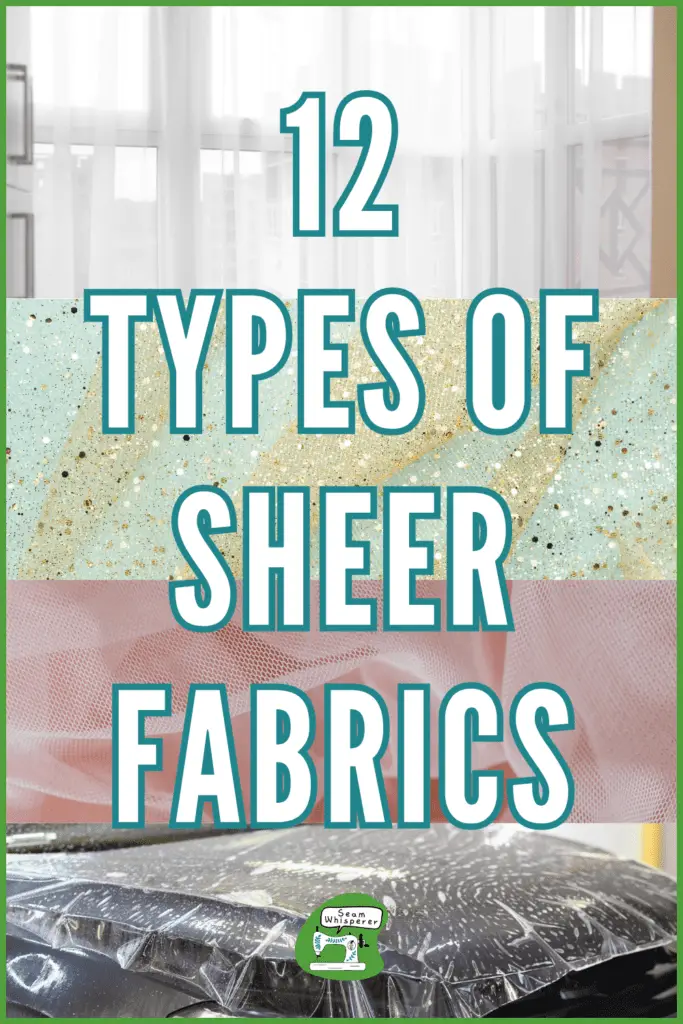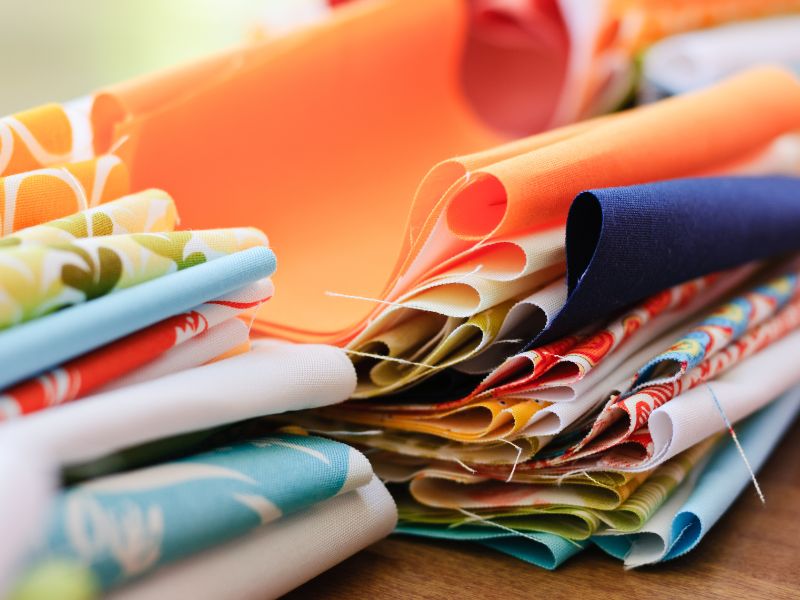If you are looking for names of transparent, sheer, or see through fabrics, you will appreciate this list of 12 different types! Including photos and descriptions for sheer fabrics as well as other sewable materials for your convenience.
Fabrics that you can see through are referred to as sheer fabrics. The word transparent means completely see through (like a window), however most sheer fabrics are more translucent (semi-transparent).
The only truly clear fabric that you can see through are sewable plastics such as vinyl, nylon, or TPU (thermoplastic polyurethane). These materials are commonly used to sew items such as raincoats, shower curtains, umbrellas, and quilt/comforter zip-bags.
Some common sheer fabrics include organza, viole, tulle, gauze, and chiffon. They come in many colors and varying degrees of transparency, and are used for all kinds of sewing applications such as clothing, embroidery, and decor.
Use the table of contents to skip straight to the list, or read about some common questions first.
This post may contain affiliate links. Read the full disclosure here.
Types Of Sheer Fabrics
If you are looking for the best transparent or sheer fabric for your project, click the photo, or the link in the caption of each photo, to see the cost of each material.
1. Organza
Organza is traditionally made from silk, but today is commonly made from polyester or nylon. Organa is popular for formalwear and costumes because of it’s slippery texture and sheer quality.
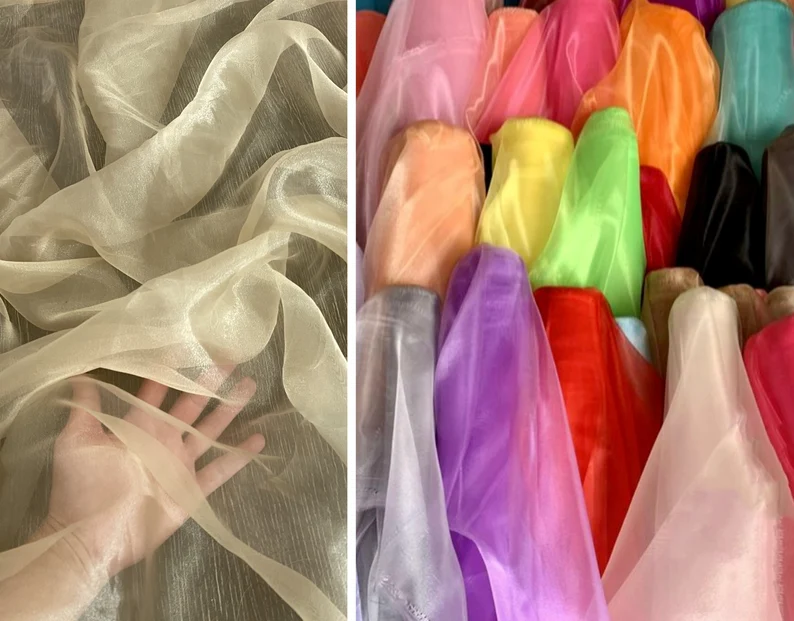
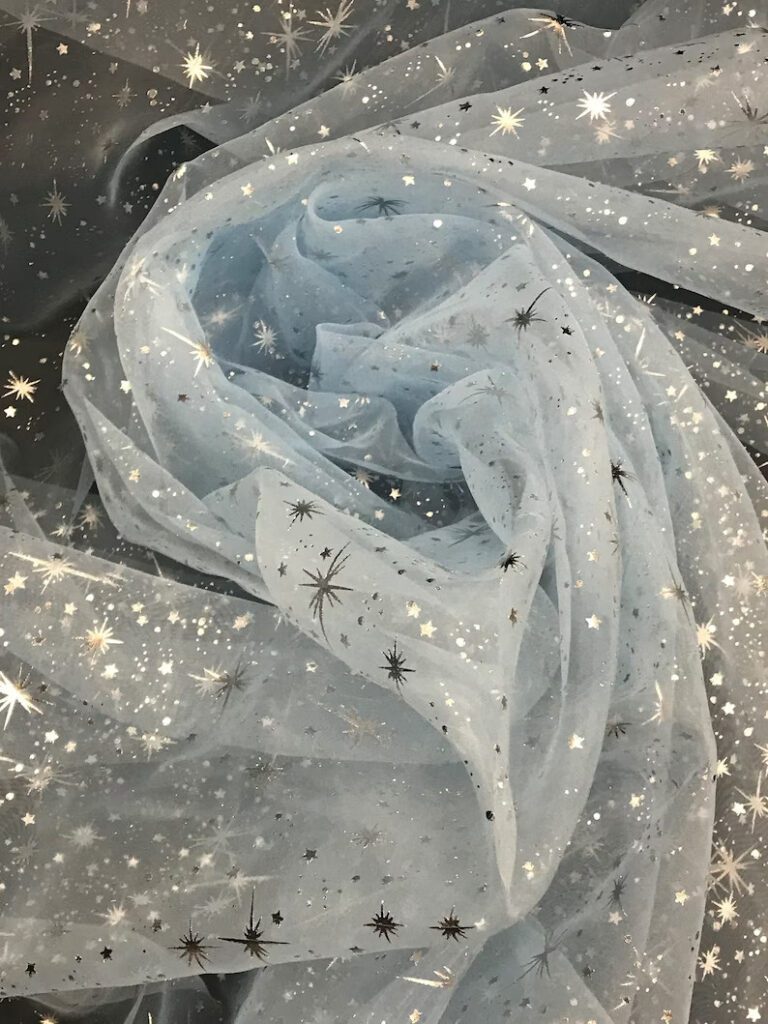

2. Chiffon
Chiffon is a thin and light translucent fabric with a stiff feel and slight stretch. Related to gauze and crepe, it is used as an overlay to add dimension to clothing, especially evening wear.
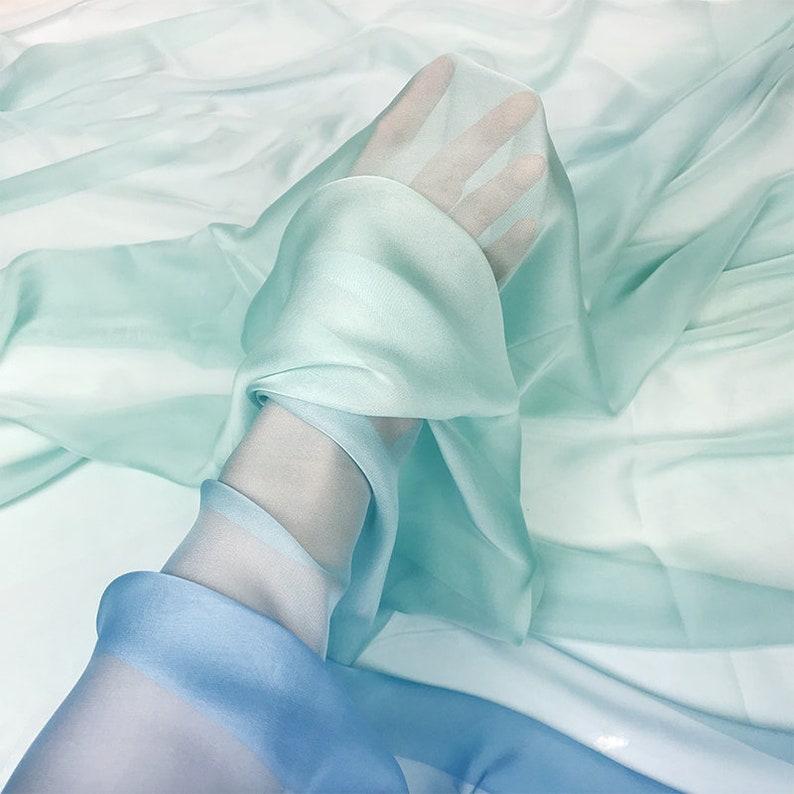
3. Voile
Typically made from cotton, Voile is soft to the touch and sheer. It is lightweight and used for curtains, veils, and dresses. It is delicate but light can pass through.
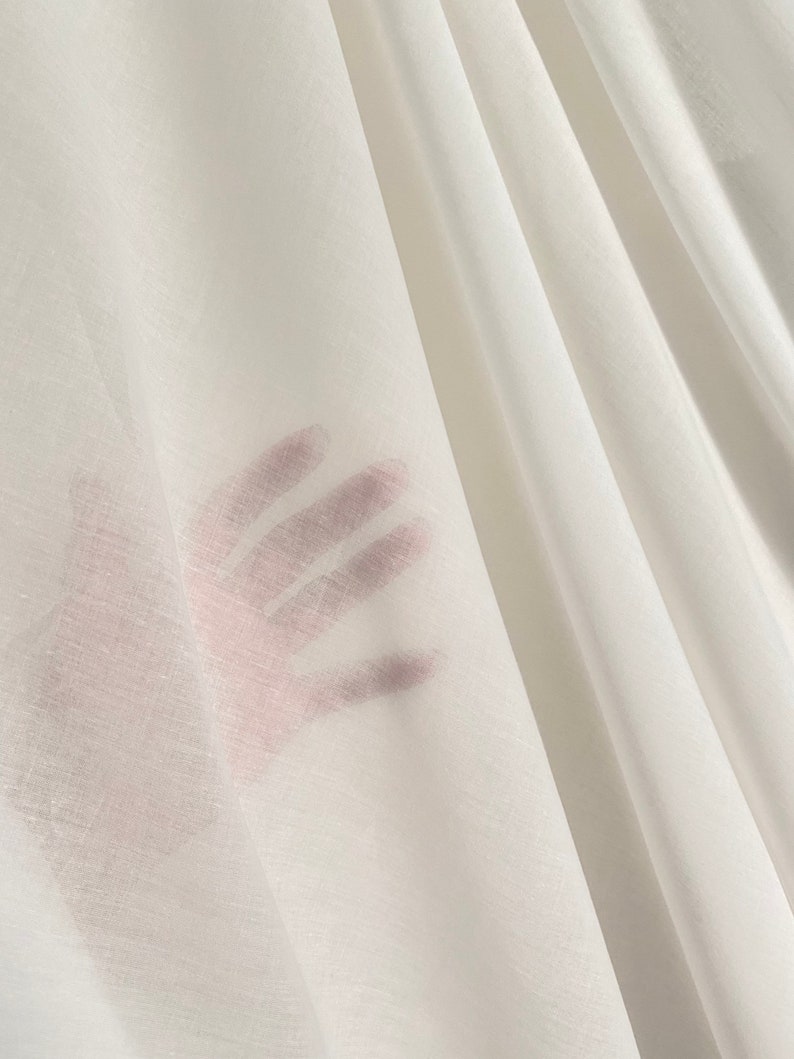
4. Marquisette
Marquisette is a material with a very loose weave which allows light to pass through very well. It is used for draperies, lingerie, wedding gowns, and can be made of natural or man made fibers.
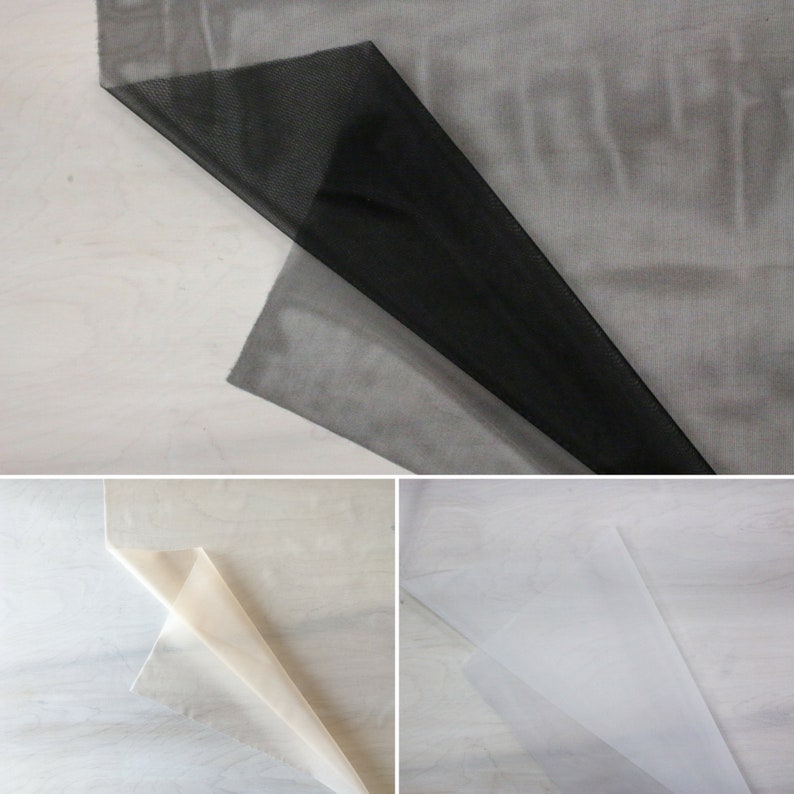
5. Lace
Lace is a fabric made with threads that are twisted and tied to make an open and delicate fabric design. Lace is used in formal wear, evening gowns, and has an exquisite and intricate look. It can be quite thin and see-though depending on the density of the design.
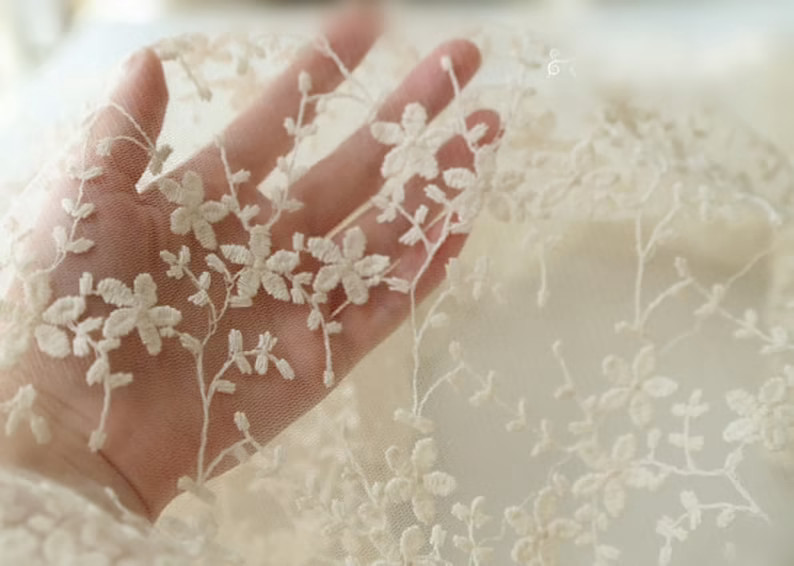
6. Gauze
Gauze if a thin fabric with a high transparency due to it’s open weave. It is stable despite it’s loose fibers, which makes it ideal for medical dressings. It can also be used in clothing for veils, tu-tus, and even book binding. One common example of a gauze fabric is Cheesecloth.
You can also make dresses and tops with gauze. It is very popular for baby swaddles too!
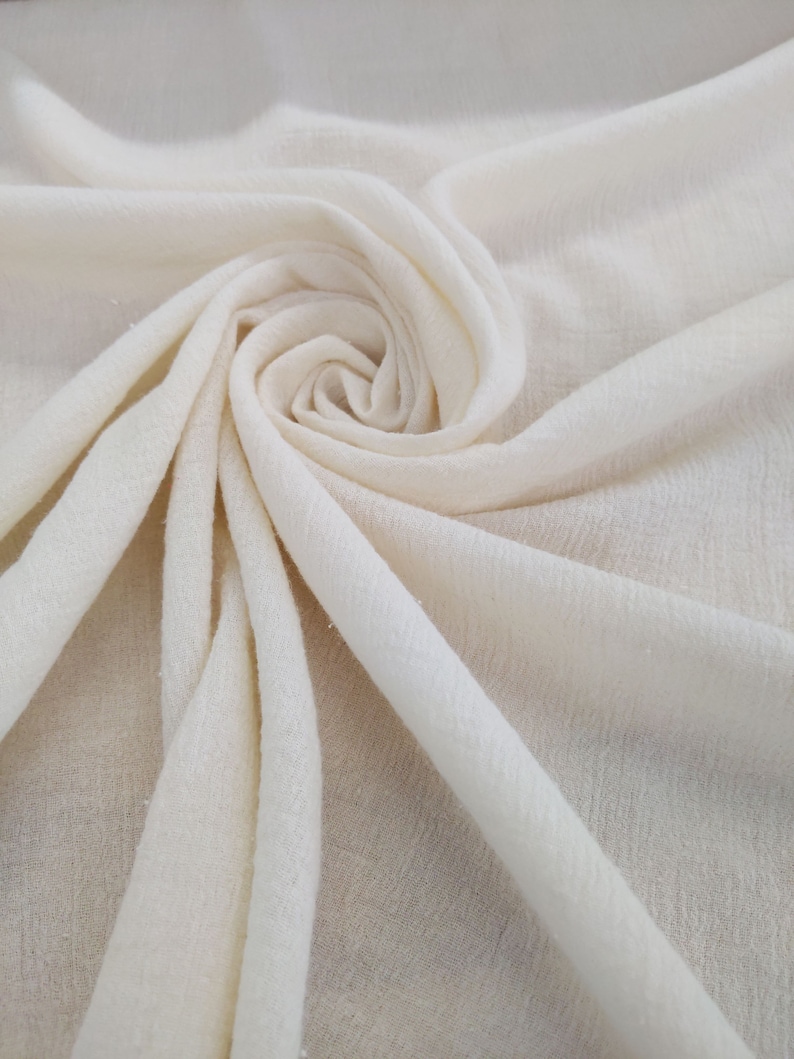
7. Muslin
Muslin can be thick or very lightweight, and is a cotton fabric. The thinnest muslin is delicate, breathable, and lets some light through.
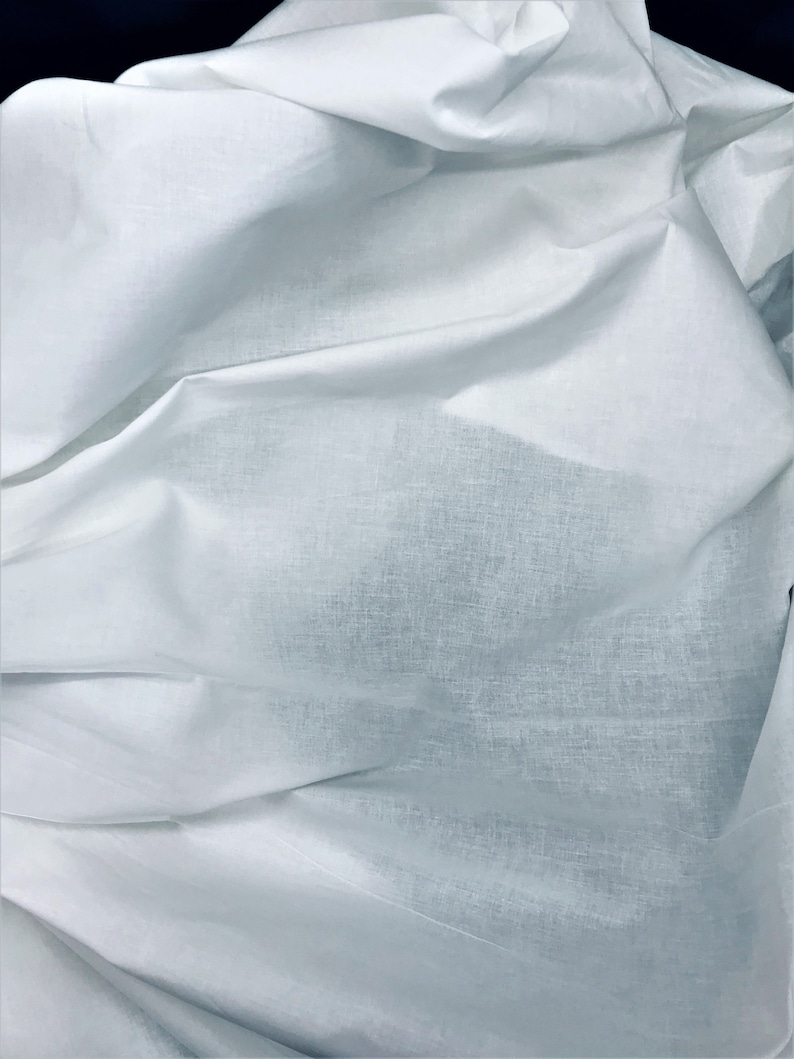
8. Net
Netting refers to any textile that is is looped or knotted at the intersections. The weave is very open which creates a fabric that light can pass through, but is still strong. Depending on the weight of the net, it can be used for tu-tus, gowns, and other clothing.
Tulle and mesh are popular net like materials.
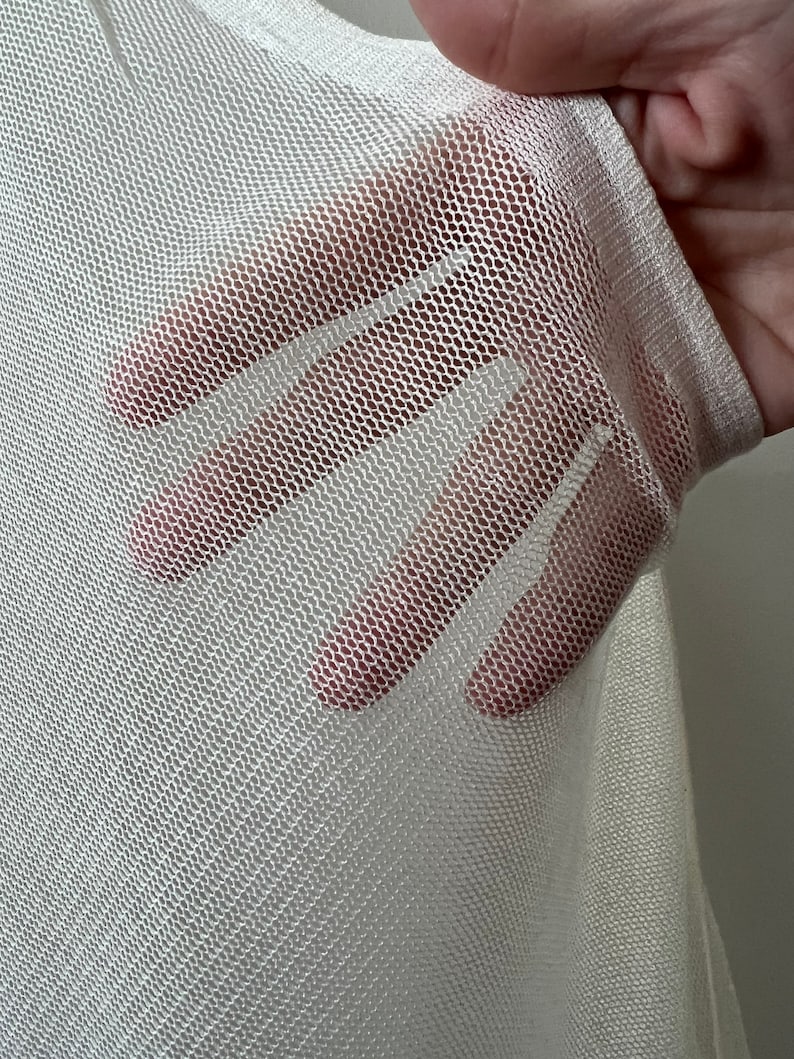
9. Linen
Made from flax, linen can be thin and airy, which makes it somewhat see through. It has a soft feel and a wrinkly texture which gives interest to casual dresses, curtains, and bedding.
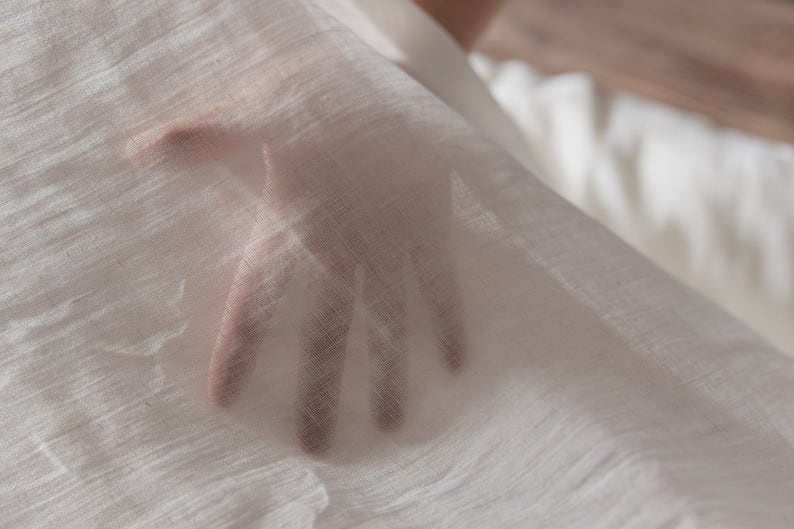
10. Georgette
Georgette and other Crepe fabrics are sheer and wrinkly. It is light and used for flowing garments like dresses, tops, and evening wear.
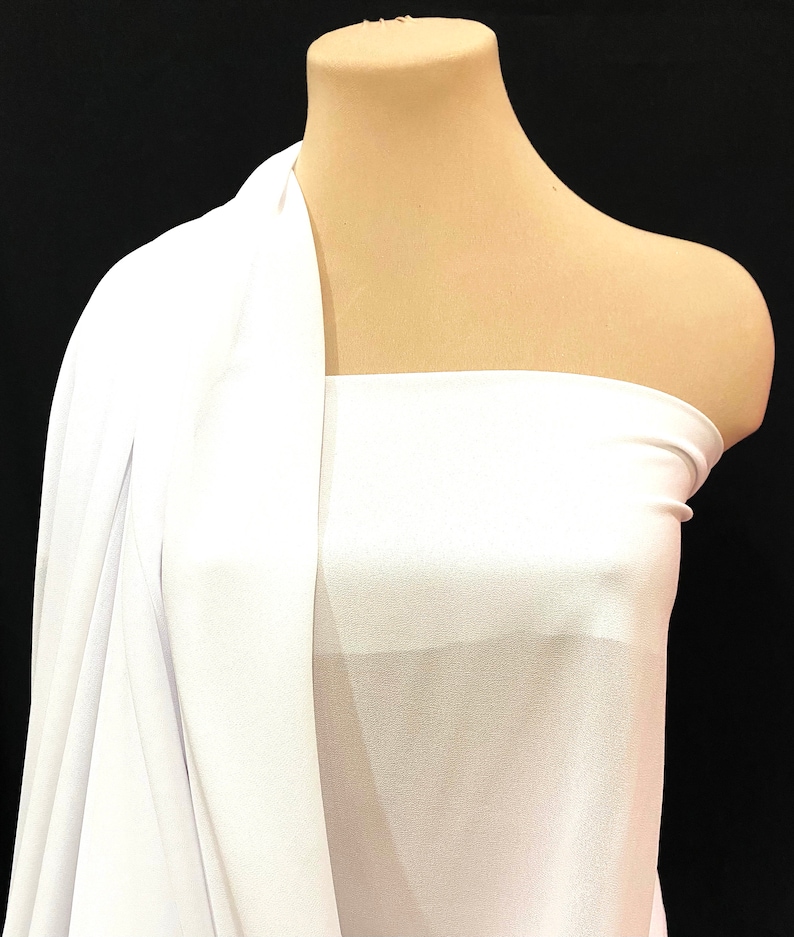
11. Organdy
Organdy is a crisp fabric that is quite stiff but very see through. It is used for curtains, dresses, and linings similar to organza. The cotton cloth is made transparent by being treated with an acid solution during production.
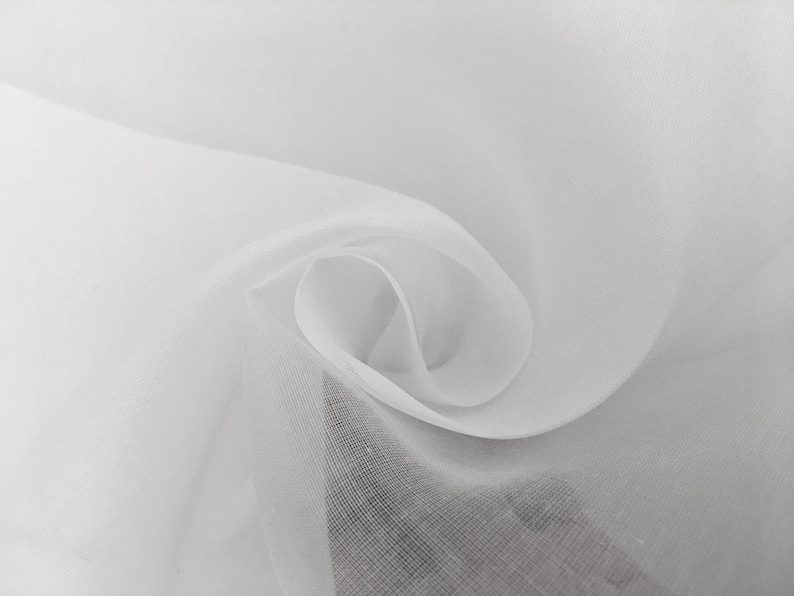
12. TPU
Thermoplastic polyurethane is not a fabric but a plastic, however it is used as a sewn material in many projects. When made into a film sheet or roll it is completely clear, waterproof, and flexible. It is used for raincoats, laminated fabric, and tablecloth covers.
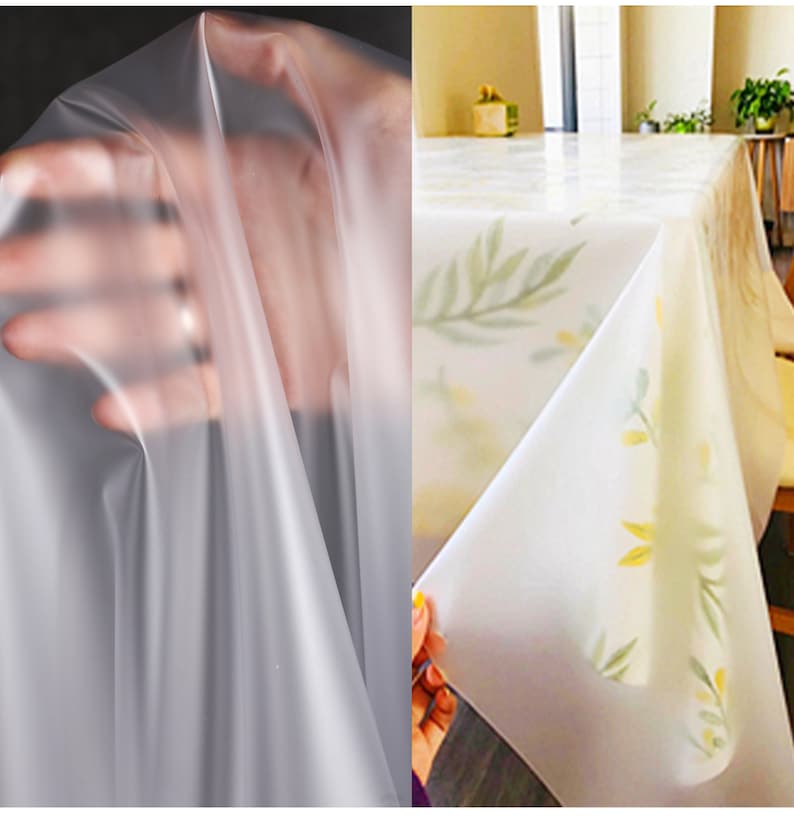
How Is Sheer Fabric Made?
Transparent fabrics such as organza, tulle, and thin linens are made by weaving with low density or open weave, or with thin and clear threads. These types of sheer fabrics are simultaneously see through and strong.
Transparent “fabrics” such as vinyl and TPU are made not by woven strands, but they are thin continuous lengths of plastic sheeting wrapped around a roll, which makes them easy to cut, shape, and sew.
What Is The Best Sheer Fabric For Embroidery?
In my opinion, the best transparent fabric for embroidery is Organza. It is thin, strong, inexpensive, comes in many colors and sheens, and has a loose enough weave to be sheer but a tight enough weave that it can be easily embroidered on.
Fabrics with an extremely open weave such as tulle, lace, cheesecloth, or mesh, can also theoretically be used for embroidery, but you may not have as good of results. Because these fabrics have so much negative space, it is difficult to place your embroidery with precision, and the material is not as strong to hold the embroidery in place.
Conclusion
If you are looking for sheer or transparent materials to sew with, I hope this post was helpful as you look for the right fabric for your project!
Most true fabrics are not 100% transparent, but let light through to varying degrees. For a real transparent look, try TPU or vinyl!

